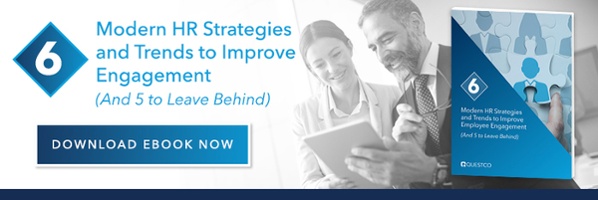
If you want to know how well your business is doing, you need to be able to measure the results of your work. And to measure success, you need to understand performance indicators. However, Human Resources' Key Performance Indicators (KPI) are not as straightforward to gauge as company-wide KPIs, such as overall business growth or revenue.
What are KPI?
A KPI measures specific areas of your business using quantifiable metrics. When you continually measure these metrics, you can determine whether your practices are making a positive impact on your company's profitability. Simply put, your KPI provides you with an awareness of your progress towards your company's goals.
What are some KPI Examples?
The KPIs that you choose need to be directly related to your company's overall goals, objectives, and strategies. Some example KPIs include:
- Turnover Rate: This KPI refers to the percentage of employees who decide to leave your company either voluntarily or involuntarily over a specific period of time. Typically, this KPI is calculated using a 12-month sliding window. Turnover rate is a vital metric since high turnover results in extra costs to replace employees.
- Cost Per Hire: Generally, cost per hire figures suggest whether or not your Human Resources and the acquisition teams are operating at their peak performance. This cost per hire calculation can help you figure out which areas of operation need to be smoothed out.
- Employee Engagement: Employee engagement is often measured through surveys (attitude or engagement) and can show how high employee engagement predicts better customer service, lower turnover, higher productivity, and many additional outcomes and benefits.
- Benefits Satisfaction: This KPI tends to be measured through an employee engagement survey and verifies the employees' satisfaction with their work benefits. This KPI is necessary and relevant to a company because it can help them reduce employee turnover.
- Absenteeism Rate: The absenteeism KPI measures the organization's well-being and health. It is calculated by dividing the number of working days in which an employee was absent by their total number of working days. This rate can be figured out for a team, individual, or even for the organization as a whole.
What is Human Resource's Controlling KPI?
Human Resource's controlling KPIs is the metric used to figure out how Human Resources is contributing to the rest of the organization. However, deciding on the best controlling HR KPI for an organization depends on a few different factors, including how the company's goals are structured.
How Do You Find your Human Resource's Controlling KPI?
Before you can figure out your Human Resource's controlling KPI, you need first to figure out your company's most important KPI. Once you know company's overall goals, you can set a controlling KPI which reflects them. To see how this plays out in real business examples, consider the following:
If it is your company's priority to cut costs, then a controlling KPI could be "cost per hire."
One of the company's main objectives is to hire the best talent in the market. However, recruiting does not come cheap. Companies have real concerns regarding hiring costs, which include expenses such as agency fees, relocation costs, in-house recruiter compensation, and sourcing costs. Therefore, if your company wants to cut its overall costs, setting your controlling KPI as "cost per hire" aligns you with the company’s overall goals.
If it is your company's priority to focus on growth, then "benefits satisfaction" and "employee engagement" are more relevant as controlling KPIs.
All companies want their business to grow. However, to achieve this objective, you need to increase your customer base but their loyalty as well. And the best way to accomplish this goal is to focus your controlling KPI on employee engagement. Why? Because most research shows, there is a direct correlation between the satisfaction of customers and engaged employees. Those employees that go that extra mile to help solve clients' issues or concerns ultimately end up achieving the business outcomes that organizations want.
How To Make this Come Together for Your Business?
It is essential to understand that every company is different. That is why even though Human Resources may have a controlling KPI, it does not mean you cannot have additional KPIs. Rather, it just means that these other KPIs must align with this controlling KPI so that a good performance in one leads to good performance in the other. Most importantly, your HR’s controlling KPI must align with the business’ overall priorities.
.jpg)
Brandon Hartsaw
Acting as the Chief Operations Officer, Brandon actively promotes an environment of creativity, collaboration, and individual ownership to empower Questco team members to deliver exceptional client experiences.




